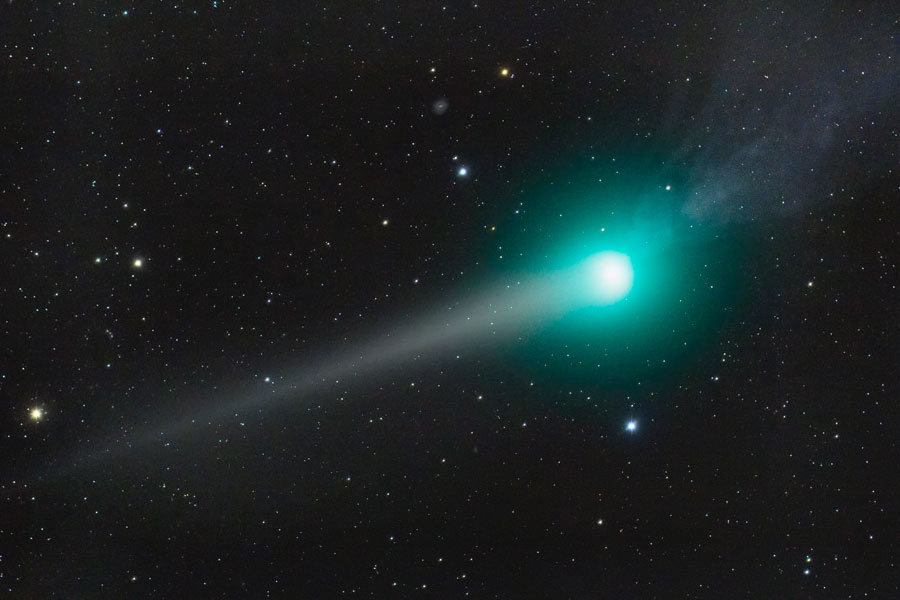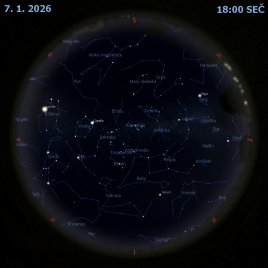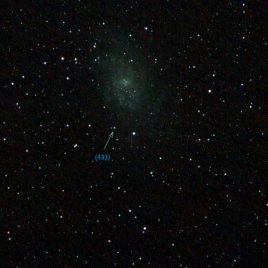Dva ohony komety Lulin

Uznání a copyright: Richard Richens (NMSU)
Běžte dnes v noci ven a podívejte se na kometu Lulin. Z tmavých míst budete potřebovat jen dobrou hvězdnou mapu a trochu vytrvalosti, ale dobrou službu vám prokáže i širokoúhlý triedr. Kometa Lulin včera prošla nejblíže k Zemi, a tak si v několika následujících dnech udrží svoji jasnost. Kometa je nyní téměř 180° od Slunce, takže je vidět skoro celou noc, ale po obloze se pohybuje o asi deset měsíčních úplňků za noc. Snímek komety Lulin nahoře z Nového Mexika v USA zachycuje, jak nádherně vypadala před dvěma dny. Centrální koma komety je dosti zelená, a tato barva ukazuje na zářící kyanové a molekulární uhlíkaté plyny. V pozadí jsou dobře vidět jasné hvězdy a vzdálená spirální galaxie. Vlevo je vidět, jak z komety vybíhá žlutý prachový ohon sledující kometu, zatímco vpravo je vidět textura modravě zářícího iontového ohonu mířícího pryč od Slunce. V několika minulých týdnech se oba tyto ohony ze Země jevily v opačných směrech. Očekává se, že v příštích týdnech kometa Lulin pomalu zeslábne.
NASA Official: Phillip Newman Specific rights apply. NASA Web Privacy Policy and Important Notices
A service of: ASD at NASA / GSFC & Michigan Tech. U.
Odkaz na originální APOD


